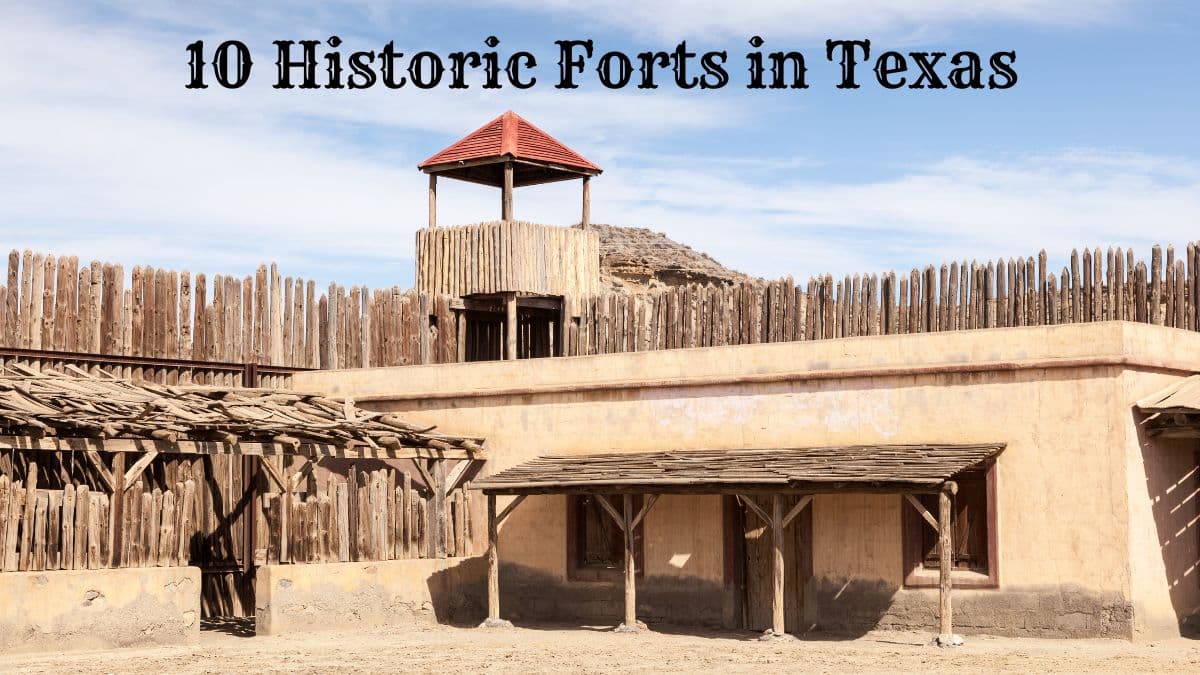Texas, also known as the Lone Star State, is rich in history. To secure the territory, numerous historic forts were established as military outposts, strongholds, and fortifications.
The historic forts in Texas played a crucial role in the Texas frontier and have a diverse military history, from the early days of the Republic of Texas through the Civil War and the Indian Wars.
Today, the grounds of these historic forts serve as reminders of the diverse military history and the significant role these military posts played in shaping the state of Texas.
Visitors can appreciate the effort put into preserving these sites and learn about the fascinating stories behind each fort.
10 Historic Forts in Texas
| 1. Fort McKavett | 6. Fort Chadbourne |
| 2. Fort Griffin | 7. Fort Inglish |
| 3. Fort Lancaster | 8. Fort Sam Houston |
| 4. Fort Concho | 9. Fort Worth |
| 5. Fort Davis | 10. Fort Bliss |
1. Fort McKavett

Situated amidst the picturesque landscapes of the Texas Hill Country, Fort McKavett stands as a testament to a significant era in American history. Its position and well-preserved state make it an invaluable resource for historians and enthusiasts alike, offering a rare and immersive glimpse into the past.
Origins and Establishment
Fort McKavett’s roots trace back to the 1850s when the U.S. military identified the need for a stronghold in this region. The primary objective of its establishment was to create a fortified location to ensure protection and serve as a strategic point for the U.S. Army troops and the famed Texas Rangers.
Over the years, the fort’s importance became evident as it played a pivotal role in the region’s defense and provided critical supply chains for the military.
Architectural and Historical Significance
A significant part of Fort McKavett’s charm is its well-maintained historical structures. Visitors walking its grounds can find themselves transported back in time, thanks to the many original buildings still standing. Some noteworthy structures include:
- Officer’s Quarters: These buildings once housed the top brass of the fort, providing them with a semblance of comfort in an otherwise rugged environment. The architectural details and furnishings offer insights into officers’ lives during that period.
- Mess Hall: A central gathering point for the troops, the mess hall was more than just a place to dine. It symbolized camaraderie and unity, essential values for soldiers far from home. Today, its structure is a poignant reminder of the daily lives and routines of those who once called Fort McKavett home.
Modern-Day Exploration
Today, Fort McKavett isn’t just a relic of the past; it’s a living museum overseen by the National Park Service. They have taken commendable steps in preserving its rich history while making it accessible.
Visitors to the fort are treated to self-guided tours, allowing them to explore at their own pace, absorbing the tales and anecdotes associated with each building and corner of the fort. Informative plaques, exhibits, and occasional re-enactments enhance the experience, painting a vivid picture of life during the fort’s operational days.
2. Fort Griffin

Nestled alongside the serene Clear Fork of the Brazos River, the Fort Griffin State Historic Site is a tangible memory of the tumultuous times in 1800s West Texas.
This fort, bearing witness to the confluence of diverse histories, cultures, and military campaigns, offers visitors an in-depth look into the annals of a bygone era.
Historical Significance
In the backdrop of the 1800s, as the western frontier of the U.S. expanded, the necessity for solid military outposts became paramount. Fort Griffin served as one such key post. Notably, it was home to the Confederate States Army troops and the Buffalo Soldiers—a proud and distinguished group of African American troops.
The fort was not just a defensive installation but also a linchpin in the broader strategy to safeguard West Texas from the frequent raids by Native American warriors. Its presence played a pivotal role in establishing a semblance of stability in the region, ensuring the safety of settlers and supporting the nation’s westward expansion.
Architectural and Environmental Highlights
Today, Fort Griffin State Historic Site offers a harmonious blend of natural beauty and historical infrastructure:
- Reconstructed Barracks: A walk through the barracks provides a visceral sense of the daily lives of the soldiers stationed at Fort Griffin. Painstakingly reconstructed, these buildings serve as a living testament to the fort’s military legacy.
- Visitor Center: A treasure trove of information, the visitor center at the Fort Griffin State Historic Site provides a comprehensive overview of the fort’s storied past. Through exhibits, artifacts, and interactive displays, guests can delve deep into the military operations, the lives of Buffalo Soldiers and Confederate troops, and the interactions with Native American tribes of the period.
- Nature Trails: Beyond its military history, the site also boasts of nature trails that meander along the Clear Fork of the Brazos River. These paths offer a tranquil escape, allowing visitors to appreciate the natural beauty of West Texas, replete with local flora and fauna.
3. Fort Lancaster

Perched with a commanding view over the Pecos River, Fort Lancaster carries with it the whispers of a time when the American West was a vast expanse of unknowns, and the need for protection was paramount.
While operational for a relatively short period, this fort left an indelible mark on the pages of history, speaking of courage, strategy, and the challenges of frontier life.
The Establishment and Importance
The 1850s saw the birth of Fort Lancaster as a protective outpost primarily designed to ensure the safety of travelers journeying along the pivotal San Antonio-El Paso Road. This route was not just a pathway for settlers, traders, and explorers but was also a vital communication and supply link bridging the vast expanses of Texas.
Fort Lancaster’s strategic positioning by the Pecos River made it an invaluable asset, especially during the Civil War. The U.S. Army and Confederate troops recognized its significance, utilizing it extensively as a supply depot.
Such was the importance of this fort that its presence played a crucial role in ensuring the flow of resources during tumultuous times.
Remnants of a Bygone Era
While time and the elements have taken a toll on Fort Lancaster, erasing much of its physical presence, the essence of the fort endures. Although few original buildings witness the fort’s past, meticulously placed historical markers breathe life into its stories.
These markers, strategically positioned, trace out the fort’s original footprint. They offer visitors a comprehensive understanding of the fort’s layout, structure, and architectural nuances.
More than that, they serve as silent narrators, recounting tales of the soldiers stationed here, their daily routines, challenges, and the broader context of the American West during the fort’s operational days.
4. Fort Concho
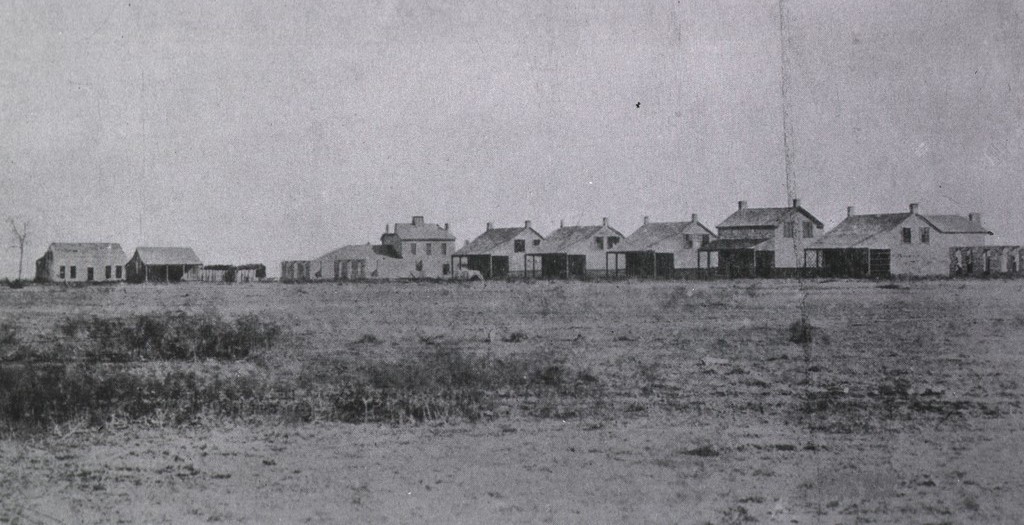
Anchored in the heart of San Angelo, Fort Concho is a bulwark of history and heritage, symbolizing a period of transition, challenge, and resilience on the Texas frontier.
Its stone walls and structures tell tales of the U.S. Army and Texas Rangers who once patrolled its grounds, ensuring the safety of settlers venturing into the vast Texan landscapes.
Historical Foundations
The establishment of Fort Concho in the 1860s was a response to the increasingly apparent need to secure the Texas frontier. As settlers ventured westward, they often found themselves in the crosshairs of Native American attacks and the turbulence of frontier lawlessness.
With its strategic location and robust construction, the fort provided the necessary defense and deterrence, becoming a beacon of safety in an otherwise unpredictable environment.
Housing both the U.S. Army and the legendary Texas Rangers, Fort Concho was more than just a military outpost; it was a statement of intent. An intent to protect, establish order, and pave the way for the continued westward push of American settlers.
Architectural Legacy
Fort Concho’s resilience is evident not just in its history but also in its well-preserved architecture. The fort complex boasts:
- Original Stone Buildings: Crafted with meticulous precision, the stone buildings of Fort Concho have withstood the test of time. Their sturdiness is a testament to the fort’s importance and the dedication with which it was constructed.
- Officer’s Quarters: These quarters, which once housed the leading figures of the fort, offer an intimate glimpse into the daily lives, challenges, and responsibilities of the officers tasked with maintaining order on the frontier.
- Mess Hall: Preserved in its original glory, it is a tangible connection to the past. It’s easy to imagine the bustle of activity, the shared meals, and the camaraderie that would have filled this space, making it the heart of the fort.
Engaging with History
Today, visitors to Fort Concho are treated to an immersive historical experience. Guided tours take guests on a journey through the annals of the fort, offering insights, anecdotes, and narratives that bring the past to life.
Each corner of the fort, every stone and structure, has a story to tell – of brave soldiers, strategic battles, and the relentless spirit of a burgeoning nation.
5. Fort Davis
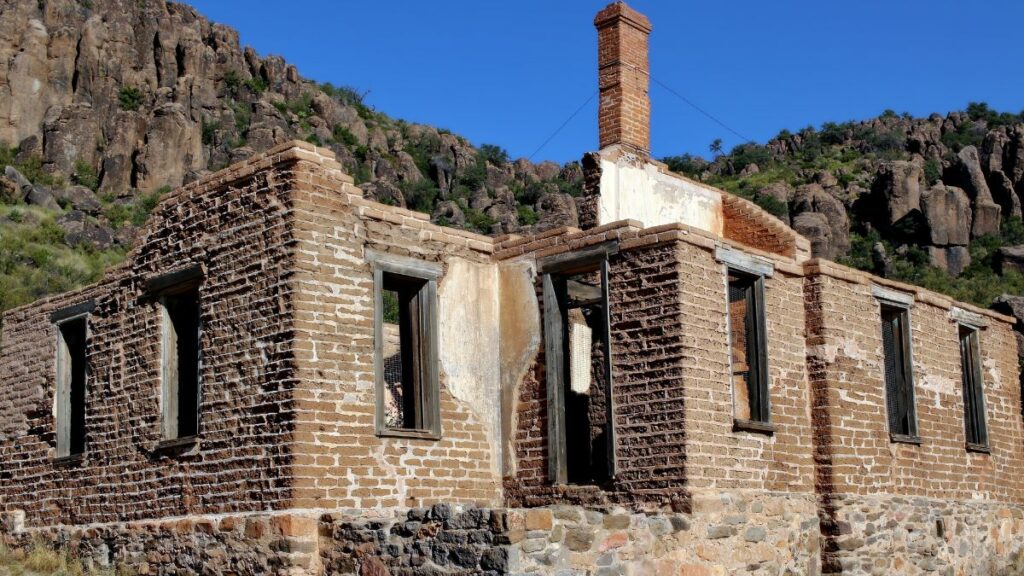
Nestled amidst the stark and breathtaking vistas of West Texas, Fort Davis stands as a sentinel of history, weaving together tales of legendary figures, frontier challenges, and the enduring spirit of a nation in the making.
Historical Backdrop
The establishment of Fort Davis in the 1850s was a strategic move, echoing the need to safeguard the Texas frontier.
Its significance was twofold. Firstly, it stood as a bastion of defense for the Rio Grande frontier, a region of critical geopolitical importance. Secondly, it protected the countless travelers, settlers, and traders traversing the San Antonio-El Paso Road, ensuring their safe passage across a land that was as beautiful as it was perilous.
Fort Davis’s fame amplifies its association with illustrious military figures, most notably Robert E. Lee, whose leadership and tactics are etched in the annals of American military history.
A Portal to the Past
The fort’s vast expanse holds within it a treasure trove of historical gems:
- Original Structures: Unlike many historical sites, Fort Davis boasts many original buildings. These aren’t mere ruins but are windows into the past, offering visitors an authentic and immersive experience. Each structure, with its unique design and purpose, offers insights into the everyday operations of the fort and the lives of its inhabitants.
- Interactive Tours: Venturing through the fort’s grounds, visitors are treated to a rich tapestry of stories, anecdotes, and facts that paint a vivid picture of life on the Texas frontier. Whether tales of skirmishes with Native American tribes or the mundane routines of soldiers stationed at the fort, every narrative brings history alive.
6. Fort Chadbourne
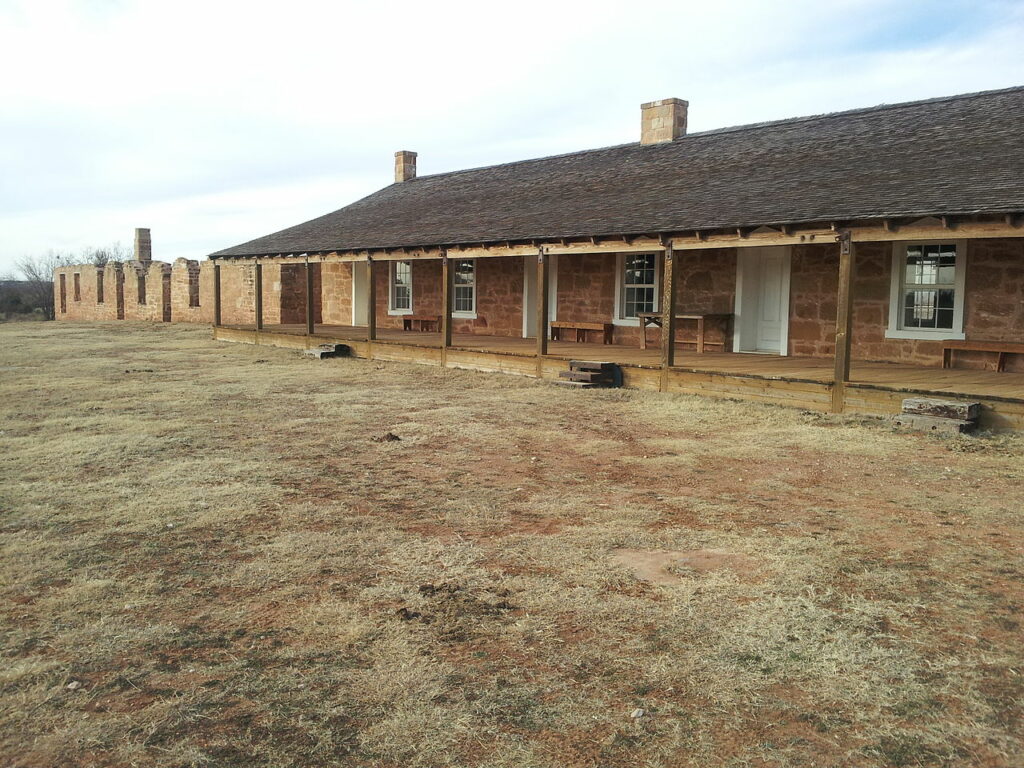
Carved into the banks of the Brazos River, Fort Chadbourne stands as a symbol of determination, strategy, and peacekeeping during the pivotal days of Texas’ settlement.
As the Lone Star State experienced waves of settlers pushing the boundaries of the American frontier, Fort Chadbourne arose as a beacon of protection and order.
A Crucial Outpost in Texas History
In the 1850s, as the westward migration intensified, so did the challenges of settling unfamiliar and often contentious lands. Fort Chadbourne’s establishment was a strategic response to these challenges.
Its primary mission was twofold: to protect settlers from potential threats posed by Native American tribes and to establish and maintain a semblance of peace on the rapidly-evolving Texas frontier.
Its position along the Brazos River offered strategic advantages and ensured a constant water supply, a critical resource in the arid Texas landscape.
Discovering Fort Chadbourne Today
- On-site Museum: Fort Chadbourne’s rich history is meticulously chronicled and showcased in the on-site museum. Boasting an impressive collection of artifacts that span the fort’s operational period, the museum serves as a tangible connection to the past. Every artifact tells a story, from military paraphernalia to personal items that once belonged to the fort’s residents, providing visitors with a comprehensive understanding of life at Fort Chadbourne.
- Self-guided Tours: The beauty of Fort Chadbourne is its accessibility. Visitors are encouraged to embark on self-guided tours of the original fort grounds, allowing them to explore at their own pace. Each step on these hallowed grounds is a journey through time, offering a firsthand experience of the fort’s layout, strategic points, and well-preserved structures.
7. Fort Inglish
Hidden within the heartland of Texas, Fort Inglish is a tangible representation of early Texan resilience, strategic foresight, and the pioneering spirit that paved the way for a budding settlement in a vast frontier.
Historical Background
Fort Inglish, established by Bailey Inglish in the early 1830s, was not a military establishment in the same vein as many other Texan forts. Instead, it was a stockade built primarily to protect the settlers against potential Native American raids.
As the settlers began to lay down roots in what is now known as Bonham, Texas, the need for a fortified refuge structure during turbulent times became evident. Fort Inglish filled this need.
The fort’s establishment can be considered one of the earliest efforts to create a semblance of structure, safety, and community in the region. Its presence allowed for the growth of a settlement that would eventually blossom into Bonham.
Reliving Fort Inglish Today
- Reconstructed Village: Although the original fort succumbed to the ravages of time, dedicated efforts established a reconstructed village, allowing visitors to step back in time. This village showcases log cabins, the fort replica, and other structures that vividly depict life in the 1830s.
- Interactive Tours: Visitors to Fort Inglish can immerse themselves in the early settlers’ daily routines, challenges, and spirit through guided and self-guided tours. These tours provide valuable insights into the construction techniques, defensive strategies, and community life associated with the fort and its surrounding settlement.
8. Fort Sam Houston

Majestically poised in San Antonio, Texas, Fort Sam Houston embodies more than just a military base; it stands as a symbol of the nation’s commitment to defense, training, and military innovation.
Established in the late 19th century, this fort has witnessed pivotal moments in American history, playing a significant role in both World Wars and serving as a hub for military medical training.
Historical Foundations
Established in the 1870s, Fort Sam Houston was strategically positioned in San Antonio, a city with a rich history. Over the years, it grew in prominence, becoming one of the U.S. Army’s principal bases. The fort’s significance was further cemented during World Wars I and II, serving as a critical training and staging area for countless troops.
Besides its military functions, Fort Sam Houston is renowned as the birthplace of military aviation. The first flight by a military airplane took off from these grounds, marking a groundbreaking moment in the history of warfare and transportation.
Exploring Fort Sam Houston Today
Historic Quadrangle: An iconic centerpiece of Fort Sam Houston, the Historic Quadrangle is the oldest structure within the fort. Originally constructed as a supply depot, this serene area, complete with lush greenery and free-roaming deer, starkly contrasts the military precision seen elsewhere in the base.
Army Medical Department (AMEDD) Museum: Highlighting Fort Sam Houston’s significant contributions to military medicine, the AMEDD Museum showcases a vast collection of artifacts, equipment, and displays that trace the evolution of military medical practices.
From surgical tools to field ambulances, visitors can explore the advancements and challenges faced in battlefield medicine over the years.
Guided Tours: Offered by dedicated historians and military personnel, guided tours of Fort Sam Houston delve into the base’s rich tapestry. As visitors walk through historic buildings, training grounds, and monuments, they are regaled with tales of bravery, innovation, and the fort’s evolution over the decades.
9. Fort Worth

Fort Worth, often called the “City Where the West Begins,” has grown from a small military outpost to one of Texas’s largest and most culturally rich cities. With a vibrant history intertwined with westward expansion, cattle drives, and the oil industry, it offers a unique blend of old and new.
Origins and Military Significance
Established in 1849 as one of the five Army forts meant to protect settlers from Native American attacks, Fort Worth played a pivotal role in the early days of Texas frontier life. Situated along the Trinity River, it was a strategic point during westward expansion.
The Cattle Drive Capital
Following the Civil War, Fort Worth quickly became a center for the cattle trade. The famous Chisholm Trail, a primary route used for cattle drives, ran through the city, earning it the nickname “Cowtown.”
Once a bustling cattle industry hub, the Stockyards District is a testament to this era’s historic architecture, rodeos, and Western heritage events.
Cultural and Economic Boom
The late 19th and early 20th centuries saw Fort Worth’s transformation from a cattle-driven economy to one of diversification. With the discovery of oil in Texas, Fort Worth became a hub for the oil and gas industry.
The influx of wealth led to investments in art, culture, and education, establishing theaters, museums, and renowned educational institutions.
Modern-Day Fort Worth
Today, Fort Worth is a modern city with deep historical roots. Areas like Sundance Square offer shopping, entertainment, and dining, while neighborhoods like the Cultural District boast world-class museums such as the Kimbell Art Museum and the Modern Art Museum of Fort Worth.
Preservation of Heritage
While the city has witnessed rapid growth, efforts have been made to preserve its rich history. The Fort Worth Stockyards National Historic District offers visitors a chance to return and experience life in the Old West. Regular cattle drives, rodeos, and cowboy culture are celebrated, ensuring the city’s legacy is not forgotten.
10. Fort Bliss
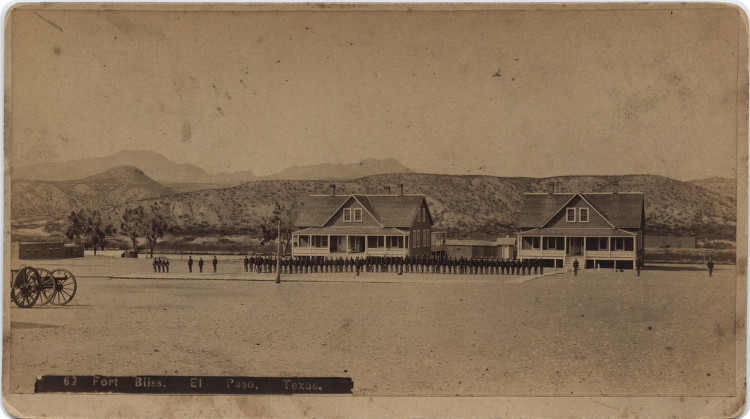
Located in the vast expanses of West Texas and straddling the borders of Texas and New Mexico, Fort Bliss stands as one of the largest military installations in the United States. With a legacy stretching back to the mid-19th century, it has evolved from a frontier outpost to a modern center of military training and innovation.
Founding and Historical Significance
Fort Bliss was established in 1849 as a post for U.S. Army troops during the tumultuous westward expansion and regional conflicts. Over the years, its strategic location near the U.S.-Mexico border meant it played a pivotal role in border disputes, Native American relations, and various military campaigns.
Role in World Conflicts
Fort Bliss expanded its scope as global tensions escalated in the 20th century. It served as an infantry and artillery training center during World War I.
In World War II, it further solidified its reputation by becoming a hub for anti-aircraft artillery training. The Cold War era saw Fort Bliss delving into missile training and testing, making it a cornerstone for the nation’s air defense efforts.
Modern Military Excellence
Today, Fort Bliss is synonymous with cutting-edge military training and tactics, especially in air defense and missile technology. The expansive grounds of the installation accommodate various training exercises, simulations, and real-world drills, ensuring that the troops stationed there are among the best prepared in the U.S. Army.
Related: 10 Historic Forts in Virginia
Texas and Frontier Expansion
Texas has a rich history of historic sites, including numerous forts established during the westward expansion of the United States. Settlement and expansion in the Lone Star State began in the mid-19th century, as settlers and the U.S. Army made their way west to claim new territories and protect existing ones.
Role of the Texas Frontier in Westward Expansion
The Texas frontier was a critical part of the westward movement, and military installations were established throughout the region to provide a sense of security to the settlers, protect them from Native American attacks, and supply the growing population.
Reasons for Military Fort Establishment
One of the primary reasons for establishing military posts in Texas was the need to secure the frontier and establish a presence along the Rio Grande. These forts served not only as a line of defense against potential threats from Native Americans and foreign powers but also as supply depots and bases for military operations.
U.S. Army’s Role in Frontier Defense
At the height of the frontier expansion period, the United States Army was responsible for most of these military installations. Units like the Texas Rangers and Buffalo Soldiers were stationed at forts across the region, defending settlers and maintaining order along the vast expanses of the Texas frontier.
Historic Military Conflicts and Installations
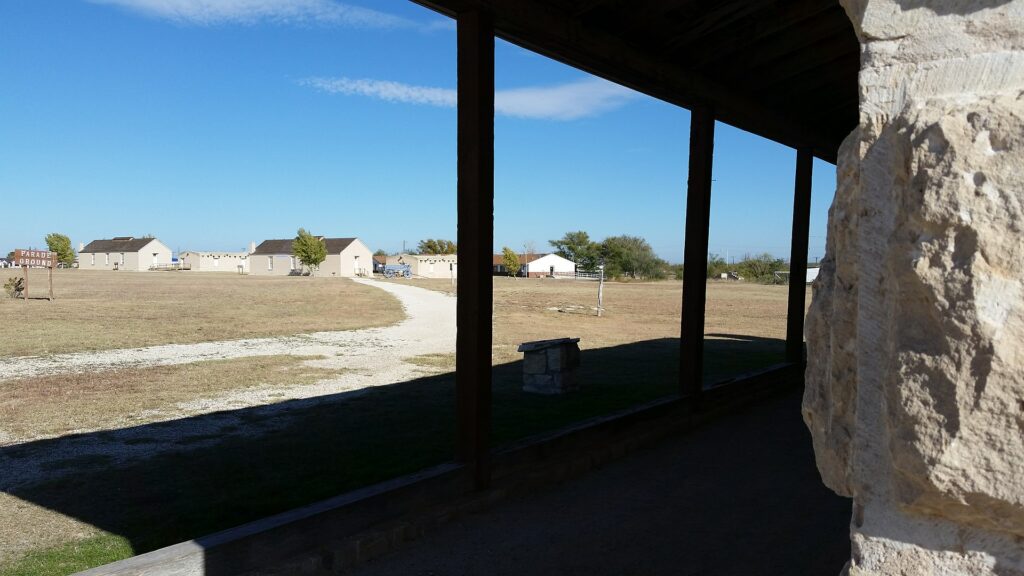
Many of the forts also hosted Confederate troops during the Civil War and the United States Army during the Indian Wars that followed. Fort Stockton, for instance, was a crucial element in the Red River War, targeting Native American warriors such as the Comanche Indians.
Forts as Community Hubs
In some cases, forts like Fort Phantom Hill, Fort Martin Scott, and Fort Duncan played a dual role, serving as military outposts and focal points for local communities. Settlements often developed around these forts, growing with the protection they offered and acting as hubs for trade and expansion.
Strategic Locations of Forts
The locations of these forts were strategically chosen, often near vital waterways like the Brazos, Pecos, and Trinity Rivers, facilitating transportation and ensuring access to crucial resources.
Preservation and Legacy
While many original buildings have faded, some historic forts still boast preserved structures, such as officer’s quarters or stone buildings. Visitors can explore and delve deep into the area’s military history, aided by historical markers.
Also, forts like Fort Griffin State Historic Site and Fort Richardson have transitioned into state historic sites, operated by bodies like the Texas Parks and Wildlife Department or the National Park Service, enriching visitors’ experiences.
Related: 10 Historic Forts in Vermont
Conflicts and Resolution at Texas Forts
Buffalo Soldiers
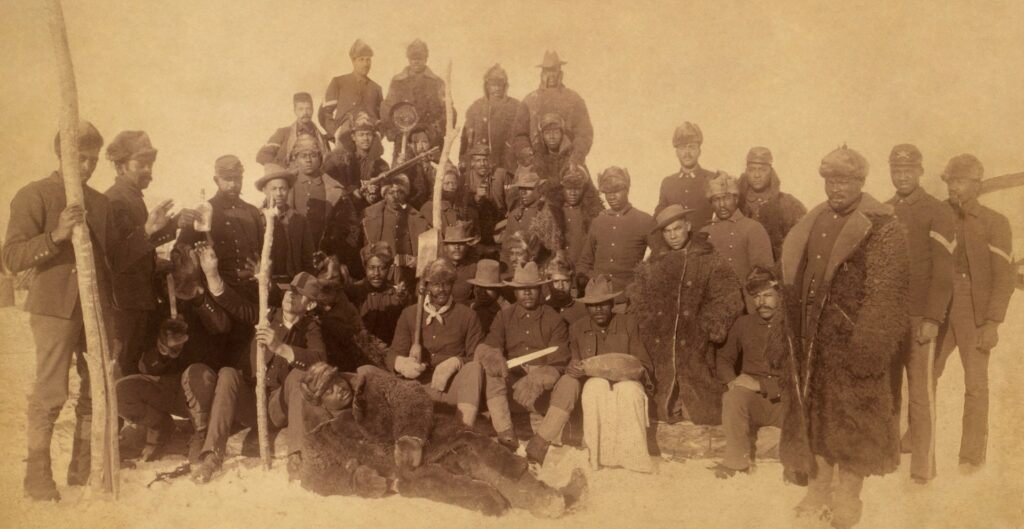
The Buffalo Soldiers were African-American soldiers who served in the U.S. Army after the Civil War. They played a significant role in protecting and expanding the Texas frontier. Stationed at historic forts like Fort Bliss, Fort McKavett, and Fort Clark, these soldiers defended settlers against Comanche Indians and other Native American warriors.
Their presence in West Texas and the Lone Star State was instrumental in maintaining peace and order throughout the region. At Fort McKavett, visitors can explore the nature trails, original buildings, and officer’s quarters used by the Buffalo Soldiers during their military occupation.
Texas Rangers
The Texas Rangers were a highly skilled local militia and law enforcement group that patrolled the Texas frontier and protected settlers during the Republic of Texas era. They maintained a significant presence in the Lone Star State, working alongside the U.S. Army at several historic forts, including Fort Martin Scott, Fort Duncan, and Fort Worth.
In the late 1800s, Texas Rangers played a vital role in establishing and defending Fort Belknap near the Trinity River. Working closely with the U.S. Army, the Rangers protected settlers from Native American attacks, especially those of the Comanche Indians.
Fort Richard Richardson is another historic site closely associated with the Texas Rangers. Here, history enthusiasts can find historical markers, stone buildings, and fascinating military history related to the efforts of the Rangers in protecting the Texas frontier.
Comanche Indians
The Comanche Indians were a prominent Native American tribe in the Texas region, often clashing with settlers and military forces. The disagreement over land and resources led to numerous conflicts between the U.S. Army and the Texas Rangers.
Many of the historic forts in the area, such as Fort Phantom Hill, Fort Concho, and Fort Leaton, were established to protect settlers and military outposts from Comanche raids. These forts played a crucial role in defending against Comanche warriors and ultimately contributing to resolving conflicts along the Texas frontier.
During the Red River War, the U.S. Army fought against the Comanche Indians in an attempt to safeguard the Texas frontier. This conflict significantly reduced the number of Comanche raids and helped establish a sense of peace and order for settlers in the region.
Related: 10 Historic Forts in Utah
Texas Entities and the Making of Texas Forts
Throughout the history of Texas, various entities played significant roles in establishing and preserving historic forts. One such key player is the Texas Historical Commission, which is responsible for protecting and preserving Texas’ historic sites, including military forts like Fort Concho and Fort Richardson.
Military Establishments in the Early Days
During the early days of the Texas frontier, local militias and the regular army regiments worked hand-in-hand to establish and maintain a network of forts.
They served as protection against Native Americans, such as the Comanche Indians, and other potential threats. The U.S. Army and Confederate troops were instrumental in constructing and occupying forts, such as Fort Lancaster, Fort Stockton, and Fort Bliss.
The Texas Rangers’ Contribution
The Texas Rangers were pivotal in ensuring the safety of settlers, securing the borders, and maintaining a military presence at well-known forts such as Fort Worth and Fort Duncan. Several of these forts were strategically placed along major waterways like the Rio Grande, the Brazos River, the Trinity River, and the Pecos River.
Historic Forts as Tourism Hubs
Regarding Texas travel, many historic forts today serve as educational hubs for tourists, offering self-guided tours and visitor centers.
Entities such as the Texas Longhorn Herd and the Official State of Texas Longhorn Herd celebrate the state’s rich cultural and historical legacy by participating in events held at these forts like Fort Martin Scott and Fort Griffin State Historic Site.
West Texas and Its Legacy
In addition to the entities mentioned above, West Texas played a critical role in developing forts. Several military outposts and installations were established in the region, including Fort Davis, Fort Clark, Fort Chadbourne, and Fort Belknap.
West Texas boasts some of the most restored and authentic reminders of the Lone Star State’s military past, such as the nature trails, original officer’s quarters, and stone buildings preserved at these forts.
Commentary – Historic Forts in Texas
Along with these ten forts, many other historic forts protected our troops and settlers over the centuries in the Lone Star State. I hope you enjoyed this article, and if you have visited any of the many historic forts in Texas, we would love to hear about your experience in the comments below.

Cory is a website owner and content creator who enjoys fishing, history, coin collecting, and sports, among other hobbies. He is a husband and father of four.
Romans 15:4 For whatever was written in former days was written for our instruction, that through endurance and through the encouragement of the Scriptures we might have hope.

